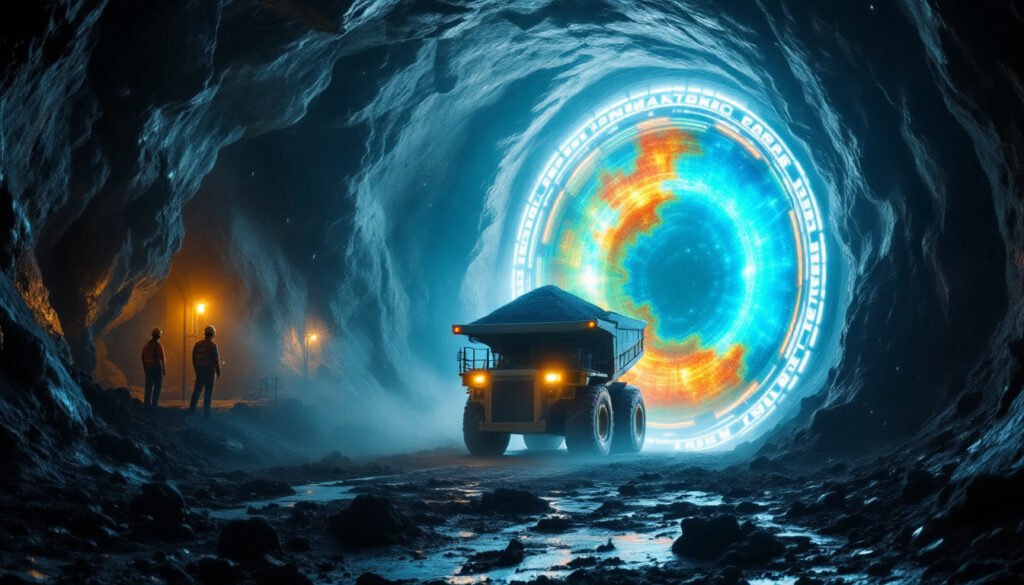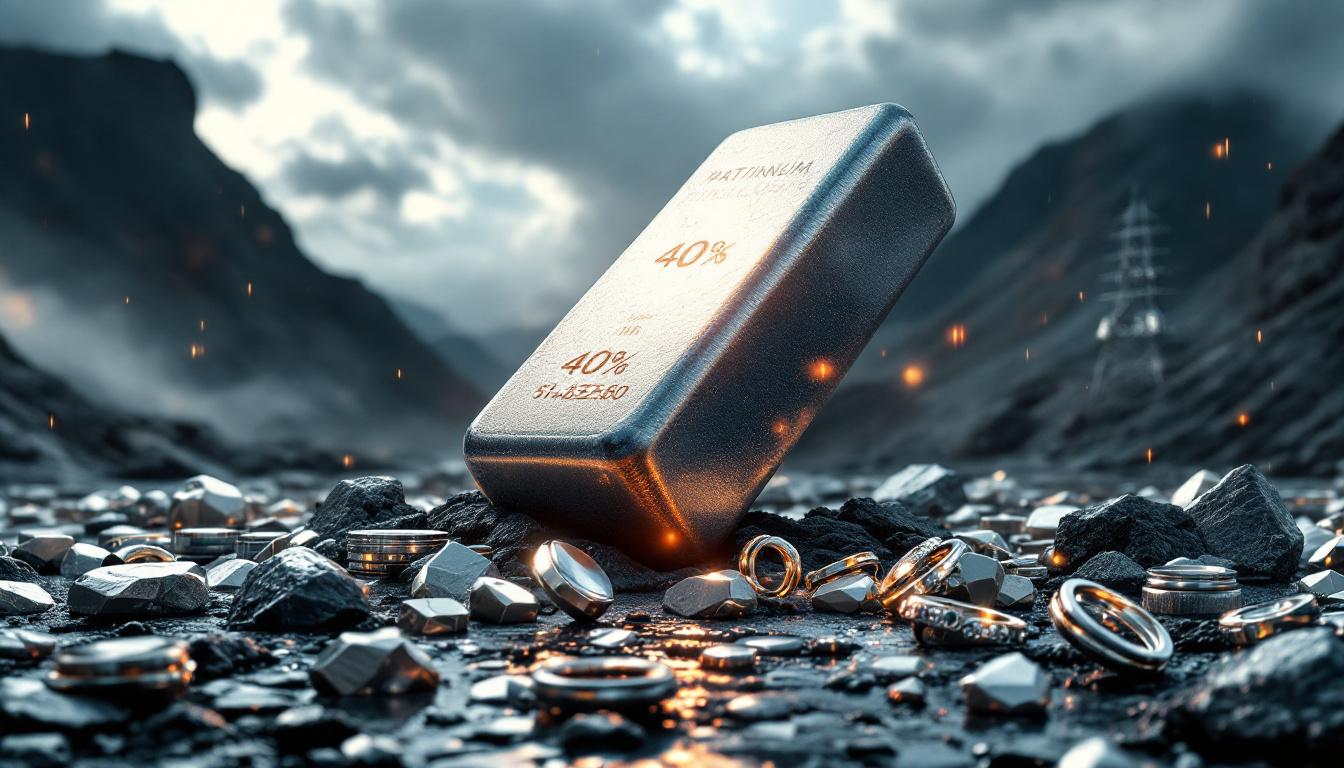What is NextOre's New MR Analyser for Underground Copper Mining?
NextOre has unveiled a groundbreaking MR analyser that is set to revolutionise underground copper mining operations. This breakthrough technology, part of the NextOre MR analyser for underground copper trucks 2025, integrates advanced magnetic resonance to deliver real-time ore sorting. In addition, NextOre MR analyser for underground copper trucks 2025 offers enhanced decision making at the mining face.
Engineered for precision, this world-first innovation builds on decades of research from Australia’s CSIRO. Consequently, the system is transforming how operators manage ore quality underground. Moreover, by streamlining operations, this technology is a key component of the NextOre MR analyser for underground copper trucks 2025.
How Does the NextOre OG3 Sensor Work?
The heart of the system is the OG3 sensor (Open Geometry, 3m diameter), which processes up to 50 tonnes of material in under one minute. This remarkable speed facilitates immediate grade measurements. Furthermore, this rapid analysis eliminates the delays associated with laboratory testing and ensures that decisions can be made in real time.
The sensor employs radio frequency pulses to interact with copper atoms within the ore. Consequently, the technology produces signals that directly correlate with copper concentration. This innovation is comparable to a world-first mr innovation system that delivers non-destructive and immediate results.
Key technical features of the OG3 sensor include:
- Ruggedised construction designed to endure harsh underground conditions
- Enhanced efficiency in crane positioning with precision-guided placement
- Adaptive scanning durations that self-adjust based on ore grade
- Proprietary algorithms that convert data into actionable insights
- A design originally developed by CSIRO and commercialised by NextOre
Additionally, the system’s 3-metre diameter enables seamless integration with standard mining trucks. As a result, no major infrastructure modifications are needed, allowing operations to benefit quickly from this cutting-edge technology.
What Benefits Does the MR Analyser Provide to Mining Operations?
The implementation of the MR analyser offers transformative advantages across various operational dimensions. Firstly, it allows operators to make real-time decisions at the extraction point, thereby reducing delays and improving efficiency. In addition, it is a practical application of digital transformation in mining that leads to significant cost savings.
Primary operational benefits include:
- Reduced haulage costs by rejecting low-grade material at the source
- Enhanced ore blending capabilities for consistent feed grades
- Optimised material movement from satellite orebodies to processing facilities
- Significant productivity improvements and overall cost reduction
Furthermore, the system offers notable environmental benefits. For instance, it reduces fuel consumption by an estimated 15–25% and decreases water usage, electricity requirements, and chemical consumption in processing plants. In addition, the decreased production of wet tailings contributes to sustainability goals.
The potential environmental impact is profound when considering mining’s role in the clean energy transition. Moreover, these decarbonisation efforts help lower the industry’s carbon footprint significantly.
When and Where Will the Technology Be Deployed?
The first commercial deployment of the OG3 sensor is planned for an underground copper mine in New South Wales, Australia. Operations are expected to commence in early 2025, marking the beginning of a new era in ore sorting and grade control. Additionally, the installation will serve as a critical proving ground for further innovations.
Deployment plans include:
- Utilisation on 30–50 tonne mine trucks
- Strategic placement at key decision points underground
- Integration with existing fleet management systems for seamless data collection
Moreover, NextOre has ambitions to expand the technology to load-haul-dump bucket loads. Consequently, this evolution could bring grade determination even closer to the mining face. This strategy aligns with trends in rio tinto’s bold shift in copper clean energy investments, where the focus is on real-time efficiency and sustainability.
What is NextOre's Track Record with MR Analyser Technology?
NextOre has built a compelling global reputation with successful installations across diverse mining operations. The system’s versatility is reflected in its numerous deployments. For instance, at First Quantum Minerals' Kansanshi copper mine in Zambia, the MR analyser has been instrumental in optimising ore routing decisions. In addition, a notable installation in Chile has processed 6500 tonnes per hour on a conveyor system.
Notable deployments include:
- A large-scale conveyor application in Chile using advanced mineral sensing
- Multiple pilot projects across Australia, gathering crucial performance data
- Successes that reflect precision up to within 0.05% of laboratory assay values
These results highlight the robust performance and reliability of the system. Furthermore, the integration of mining industry decarbonisation efforts underscores the technology’s contribution to sustainable operations. In addition, innovative techniques such as innovative copper smelting techniques in chile have further validated its adaptability across regions.
Why is This Technology Important for the Mining Industry?
According to NextOre CEO Chris Beal, mining companies must continually improve efficiency while reducing costs in a challenging economic climate. Consequently, operators are prioritising smarter, lower-risk solutions with immediate operational benefits. As such, the OG3 sensor presents a viable alternative to large-scale capital projects by providing instant, real-time ore grade information.
The MR analyser offers several critical advantages:
- Immediate operational value with real-time ore analysis
- Lower-risk integration compared to traditional capital projects
- More precise ore routing that bypasses unnecessary processing costs
- Support for sustainable mining practices through targeted resource optimisation
Moreover, this technology addresses the industry’s skills gap by embedding analytical capabilities in the mining process. Consequently, operations become less dependent on specialised human expertise for routine grade control. In addition, industry experts consider this system to be a significant step forward in ensuring long-term operational efficiency.
FAQs About NextOre's MR Analyser Technology
What is magnetic resonance (MR) technology?
Magnetic resonance technology utilises electromagnetic fields and radio frequency pulses to detect and measure ore composition. This process rapidly determines copper content without derivation from physical sampling. Furthermore, similar in principle to medical MRI scanners, it provides operators with immediate and non-destructive grade information.
How does the MR analyser compare to traditional ore sorting methods?
The MR analyser delivers grade information in seconds, unlike traditional methods that take hours or days. Consequently, it transforms decision-making processes underground. In addition, while other sensors like XRF or XRT evaluate only surface composition, magnetic resonance assesses the entire ore body for a representative analysis.
Can the technology be adapted for minerals other than copper?
Although the current focus is on copper mining, the underlying MR technology shows potential for other minerals. NextOre’s research division is exploring adaptations for iron ore, nickel, and gold-bearing sulphides. However, each application requires specific calibrations to suit the material properties.
What are the environmental benefits of implementing this technology?
The system significantly lowers resource consumption and waste production. For instance, it reduces water, fuel, and chemical usage while decreasing energy demands. Furthermore, by minimising the processing of waste rock, the MR analyser contributes to smaller tailings facilities and a reduced environmental footprint. In addition, this supports broader environmental sustainability initiatives emerging in the industry, such as those outlined in cutting-edge magnetic resonance analysis.
Through a combination of immediate operational benefits and a commitment to sustainability, NextOre’s innovative solution is set to redefine copper mining operations and support the industry’s clean energy transition goals.
Want to spot the next major mineral discovery before the market does?
Gain immediate notifications of significant ASX mineral discoveries through Discovery Alert's proprietary Discovery IQ model, which transforms complex data into actionable investment insights. Explore why historic mineral discoveries can generate substantial returns by visiting Discovery Alert's dedicated discoveries page.




